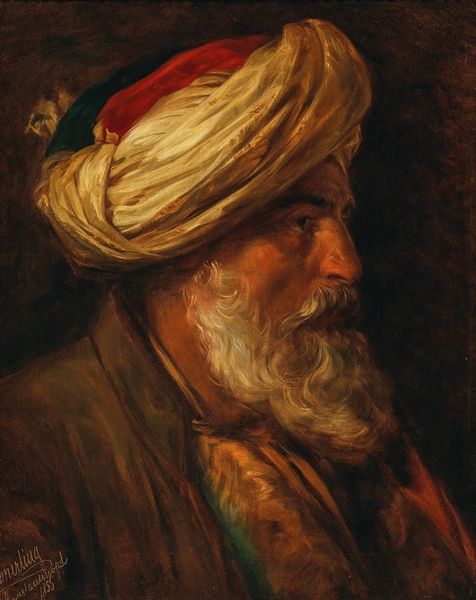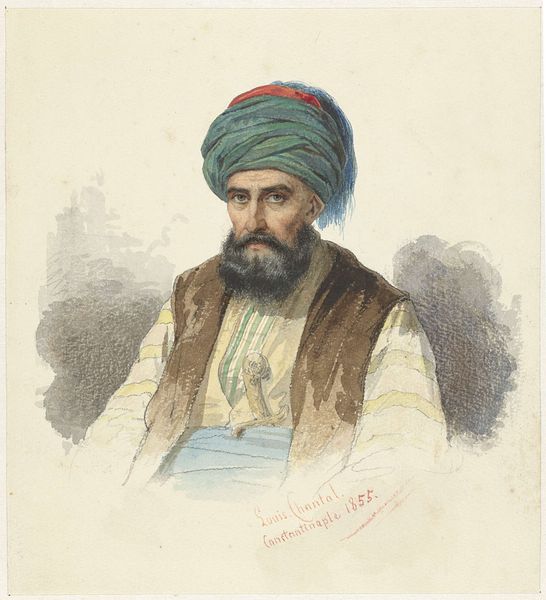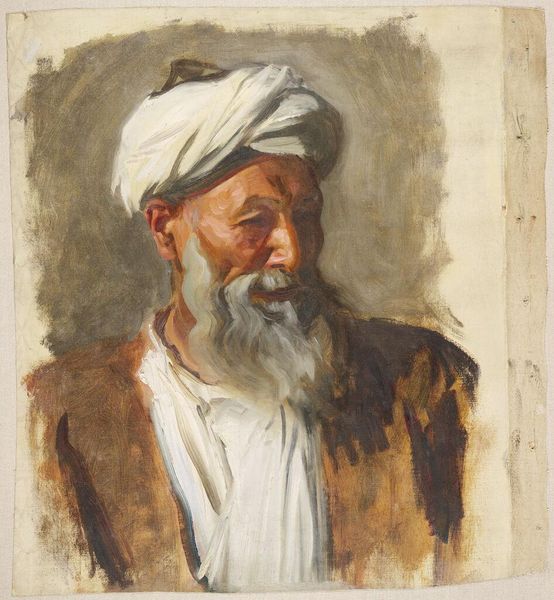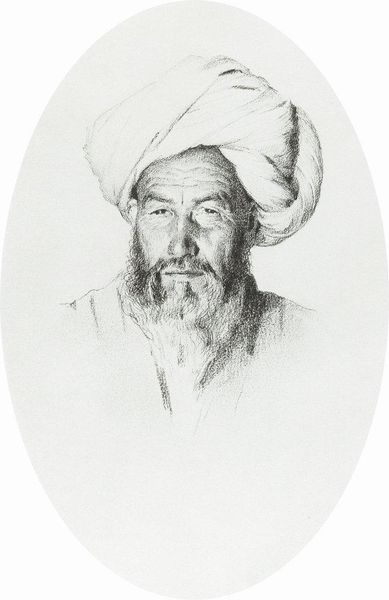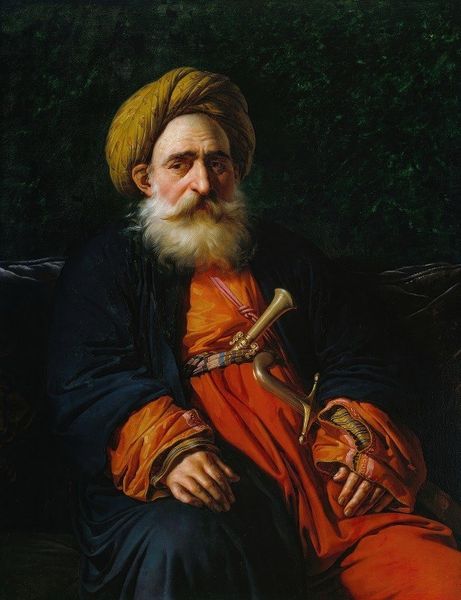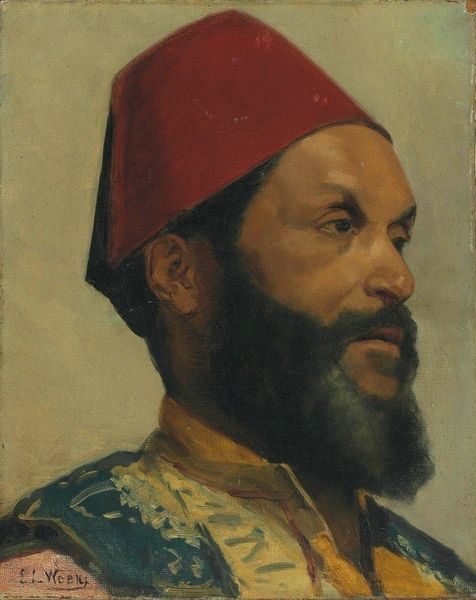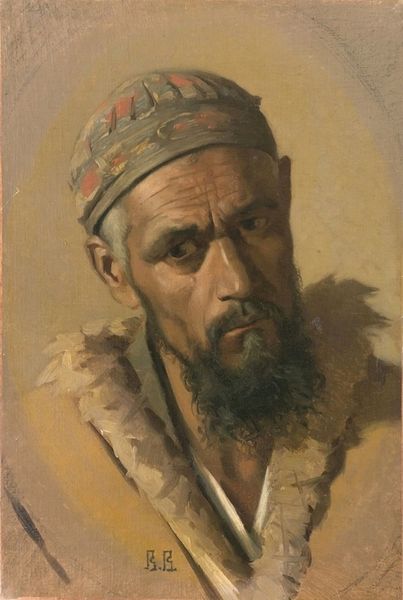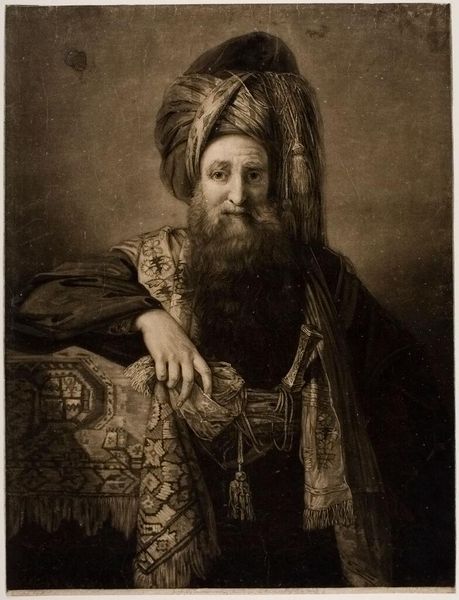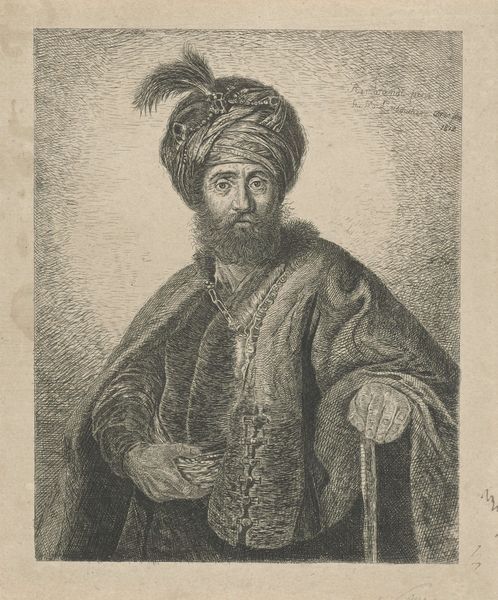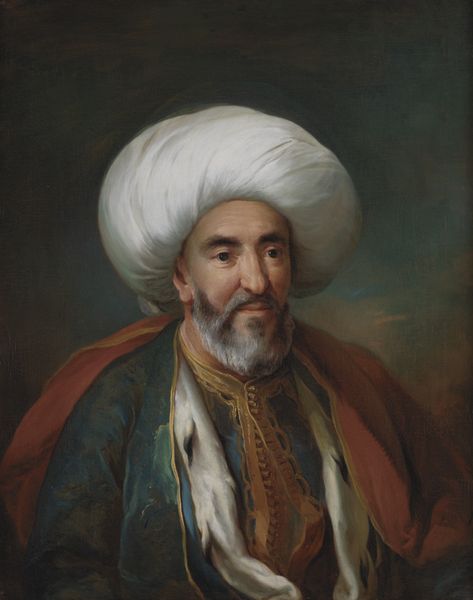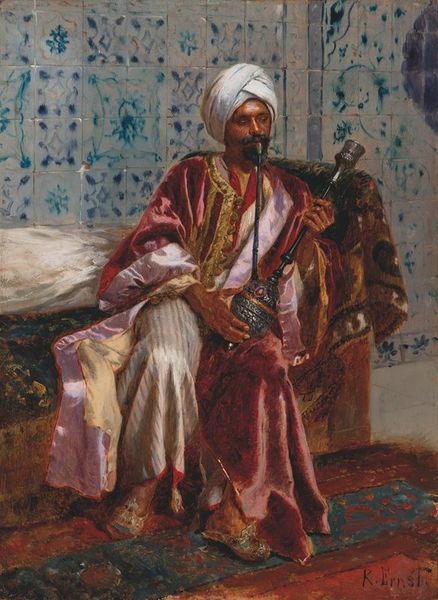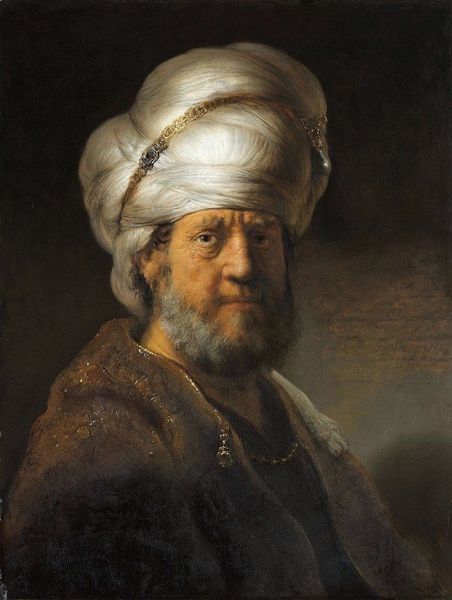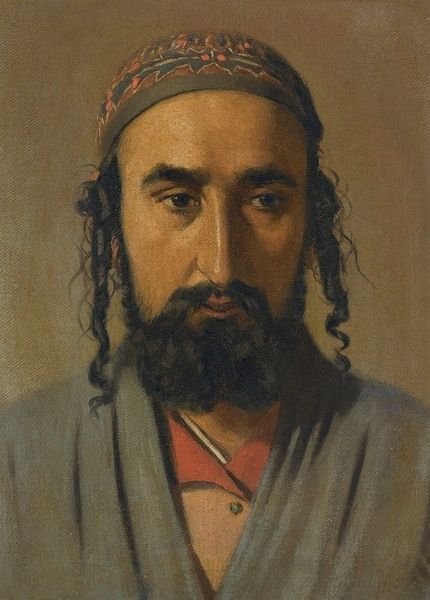
oil-paint
#
portrait
#
portrait
#
oil-paint
#
romanticism
#
orientalism
#
history-painting
Copyright: Public Domain: Artvee
Curator: Welcome. Before us hangs "Ein Türke," or "A Turk," rendered in 1840 by the Austrian artist Friedrich von Amerling. It’s an oil painting, representative of the Romantic fascination with the "Orient" that permeated much of 19th-century European art. Editor: First impressions? That turban! It’s this gorgeous mix of greens and burgundies. It has a theatrical air that clashes ever so slightly with the solemn profile. He seems caught between worlds, doesn’t he? Exoticized, but undeniably human. Curator: Indeed. Amerling, a celebrated portraitist within Viennese society, painted this during a time when "Orientalism" was fashionable. The "Orient" often became a projection screen for European fantasies and power dynamics. The term "Türke," which simply means "Turk" in German, here stands for the archetype of a character rather than any precise likeness of a man. Editor: That’s the slightly unsettling thing for me. He’s so meticulously rendered, almost reverentially… yet, I wonder how much agency he, the actual subject, had in all of this? Was he in on the artistic vision, or simply… a stand-in for a European fantasy? It dances between genuine respect and exoticising objectification, which makes viewing it today quite complex. Curator: The gaze is definitely worth exploring. Consider the lack of eye contact. He gazes toward something outside the frame, perhaps even a future we, as viewers, are invited to ponder. This was painted at a time of waning Ottoman influence. The "exotic" became something to study, and something to master… or at least believe one could master through depiction. Editor: The textures are divine. You can practically feel the weight of the beard, the silkiness of the turban. There is a hyper-realism employed. Even knowing the possible agendas behind it all, I am captivated. It is an excellent study of an intriguing subject regardless of intent. Curator: I agree. His costume is interesting. What might appear as typical “Oriental” dress for European viewers contains many layers of reality as a reflection of then fashionable status symbols. While remaining within its art-historical contexts it forces a needed look at what it means to otherize an entire portion of the world based on presumptions and power dynamics. Editor: Exactly. Well, seeing the art for me isn’t only looking but feeling—diving head-first into conversations it sets alight within oneself. This canvas makes the old, romantic stories glow while nudging us to ask better questions of the world, and the art that holds up its mirror.
Comments
No comments
Be the first to comment and join the conversation on the ultimate creative platform.
